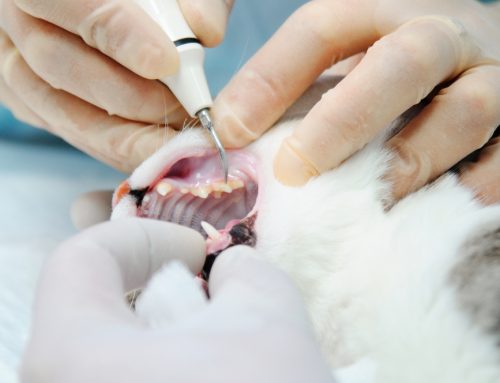
Have you just adopted your first kitten, or maybe this is just the first cat you’ve had in a long time? There’s a lot to plan for and educate yourself about, and this article will guide you through it.
Where to Find a Kitten
Haven’t got your new kitty yet? Shelters and private rescue groups are bursting with kittens in the spring and summer. Check out petfinder.com for a start, or check out our page of local rescue and adoption groups. Ask the rescue group if their cats have been checked out by a veterinarian and vaccinated prior to adoption.
Considering a breeder? Make sure your breeder of choice has the breed’s (and each kitten’s) best interests in mind. A truly reputable breeder is likely to breed only a few litters per year, often restricts themselves to just one or two specific breeds overall, and will screen their adult cats for signs of breed-related conditions such as cardiac diseases, ocular diseases, and others. Optimally, a kitten would remain with its mother and littermates until it was 8-12 weeks old.
Diet
Kittens under one year of age should be fed a diet labeled for kittens or for “all life stages.” Kittens establish their lifelong food preferences when they are young, so if you plan on feeding both canned and dry food to your adult cat, you should offer both to a kitten as well. You may be interested in reading our blog post on feline nutrition for an extensive discussion of the dietary needs of cats.
Vaccinations
Your new kitten may come to you after he has had his first round of vaccines, but is likely to need at least a few additional vaccinations. Some are considered “core” or required by law, while others are lifestyle-dependent or optional. Here are the vaccines we consider for each new kitten:
- Rabies – This is a core vaccination, and required by law. A kitten is old enough to receive this vaccine when they are 12 weeks of age.
- Distemper & Respiratory Virus combination – This is a core vaccination, administered once every 3-4 weeks until a kitten is 16 weeks old. Distemper (also called Feline Panleukopenia) is a highly contagious and potentially deadly viral disease. Affected cats will become lethargic and lose their appetite. Fever, vomiting, and diarrhea are frequently seen, but some cats die suddenly with few clinical signs. The virus is shed in the feces of affected cats, and can survive for months to years in a household or outdoor environment. The virus is resistant to many disinfectants. You can see why vaccination is so important!! Thanks to vaccines, this is now considered an uncommon disease. Feline herpesvirus and calicivirus are responsible for 80-90 percent of infectious feline upper respiratory infections. Sneezing, runny eyes, runny nose, and fever are the usual symptoms. Many kittens are exposed to one or both of these respiratory viruses before they are old enough to be vaccinated. Vaccination can still reduce severity of disease and help prevent future flare-ups.
- Feline Leukemia Virus – As the name suggests, this is a virus than can cause leukemia. This virus is the most common cause of cancer in cats, it may cause various blood disorders, and it may lead to a state of immune deficiency that hinders the cat’s ability to protect itself against other infections. This vaccine is recommended only for cats who will be spending time outdoors, or who live with another cat who goes outdoors and/or is already known to have Feline Leukemia Virus.

Deworming
Your new kitten may have already been given a dewormer by the breeder or rescue group, but repeat treatments with a dewormer and/or testing a stool sample to check for parasites is recommended.
External Parasite Preventatives
Yes, cats can get heartworm too! Prevention of heartworm disease via a product such as Heartgard, Revolution, Advantage Multi, or others is strongly recommended. These therapies may exist as a soft-chew, pill, or topical drop.
Prevention of fleas is especially important for cats who go outdoors, or live with another pet who goes outdoors and may bring “hitchhikers” home with them. It is much easier to prevent a flea infestation from occurring than to resolve one that is already going on in your household. Fleas can cause anemia if they are present in large numbers, and ingestion of a single flea can introduce tapeworms to a cat’s intestine.
Prevention of ticks may be important for cats who spend a fair amount of time outdoors. Fortunately, cats do not commonly seem to become ill from tickborne diseases. Please note that most flea/tick products designed for use on dogs can be highly toxic to cats. Only a few cat-safe tick preventatives exist (we would recommend Revolution, Frontline, or the Seresto collar).
Visit our blog article on flea control for a discussion and comparison of several different flea and/or tick preventative products.
Pet Insurance
Whether you decide pet insurance is the right choice to help protect your new kitten, or if you would prefer to save up your own emergency fund, it is simply important to have a plan in case of an emergency medical expense. There is a complete discussion and comparison of pet insurance providers on our blog, too.
Microchip Identification
A microchip is the only completely secure and permanent way to identify your pet if they ever get lost. A microchip with a unique ID number is implanted under the skin, usually around the shoulders. It hurts a bit more than a vaccine, so while it can be done at any time, it is generally preferred to place a microchip while a pet is already under anesthesia for a spay or neuter. If your pet is found and scanned for a chip, the ID number will link them to your veterinarian, your home address, and any other information you register with the chip company.
Spaying and Neutering
Rescue kittens are sometimes already spayed or neutered before they are adopted, but in other cases we can plan for the ideal time to spay or neuter a pet. In general, it is best to wait until a cat is done growing to spay or neuter them; this may be from 5 to 8 months of age
Why do we decide to spay or neuter? In addition to population control and reducing behaviors suchas roaming off, urine-marking, and/or getting into fights with other cats, there are a handful of disease conditions that can be reduced or eliminated by spaying or neutering. Spaying reduces the incidence of mammary cancer later in life. It eliminates the chance of cancers of the reproductive tract, as well as the development of pyometra (an infection of the uterus). While infection or cancer of the male reproductive tract is not common in cats, neutering further reduces or eliminates this risk.
Socialization
“Socialization” doesn’t just mean social interaction with other pets. Help your kitten become accustomed to the things that will become daily life experiences: meeting new people, interacting with children, having their teeth brushed, having their nails clipped, learning not to be afraid of the vacuum cleaner, etc. And start early!! Kittens are most impressionable between 2 and 14 weeks of age.
Kittens can be a lot of trouble! Make sure your new kitten has opportunities to learn appropriate ways of burning off all that energy. Ideally, you should provide access to all of the following:
- At least one more litter box than the number of cats in the home. For example, a household with two cats should have three litter boxes. This will help reduce the chances of inappropriate urination/defecation, and may help ease conflicts between cats.
- An appropriately sturdy, tall, and textured scratching post, to encourage appropriate scratching behavior and keep your furniture safe.
- Opportunities to rest or hide in a few different places around the home, especially high-up vantage points, such as on top of a bookshelf. This helps cats feel secure in their surroundings, especially in a household with other pets.
- Toys that emulate hunting behavior, such as small objects that squeak, chirp, crinkle, and can be batted around. Some cats also enjoy feather “fishing pole” type toys, or laser pointers (but be careful about their eyes).
Safety Considerations
As an emergency hospital, we know all about the trouble that’s out there for a kitten to get into! Here are a few items to keep in mind when kitten-proofing your home:
- Human medications: While some human medications are safe for cats at an appropriate dose, others can be quite toxic. Never let your pet have access to painkillers (even over-the-counter drugs like Advil, Motrin, Tylenol, Aleve, etc.), sleep aids, steroid pills or creams, or any human prescription medication.
- Toxic foods and risky toys: Fortunately, cats seem to get into less trouble than dogs when it comes to eating things they shouldn’t. Keep chocolate, alcoholic beverages, sugar-free gum, onions, garlic, and anything especially greasy or fatty away from your cat. Cats may try to play with hair ties, pieces of string, etc., but be careful they do not try to swallow any of these playthings.
- Interactions with other pets: Your other furry family members might not be as excited as you are about a new kitten! Make sure your pets’ interactions are closely supervised until you are sure they are getting along well together.
- As mentioned earlier, many flea/tick products designed for use on dogs are quite toxic to cats. Read the product’s packaging, always use flea/tick products according to the label instructions, and if you’re not sure, call your vet.
Good luck with your new kitten and we’ll see you at your next visit!!
To download and print this article, please click here.






Leave A Comment